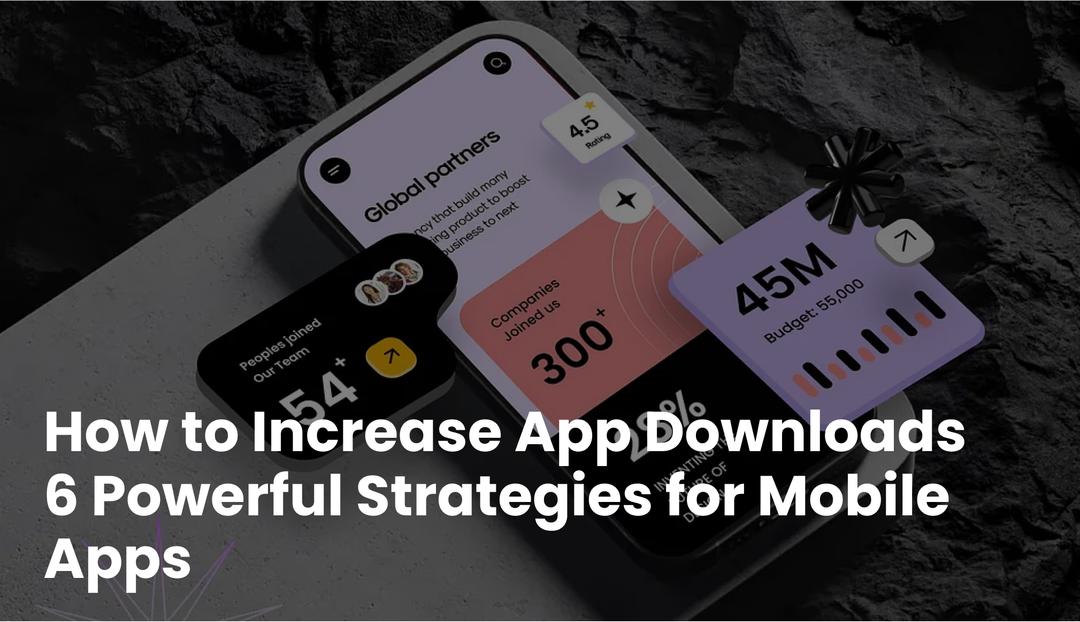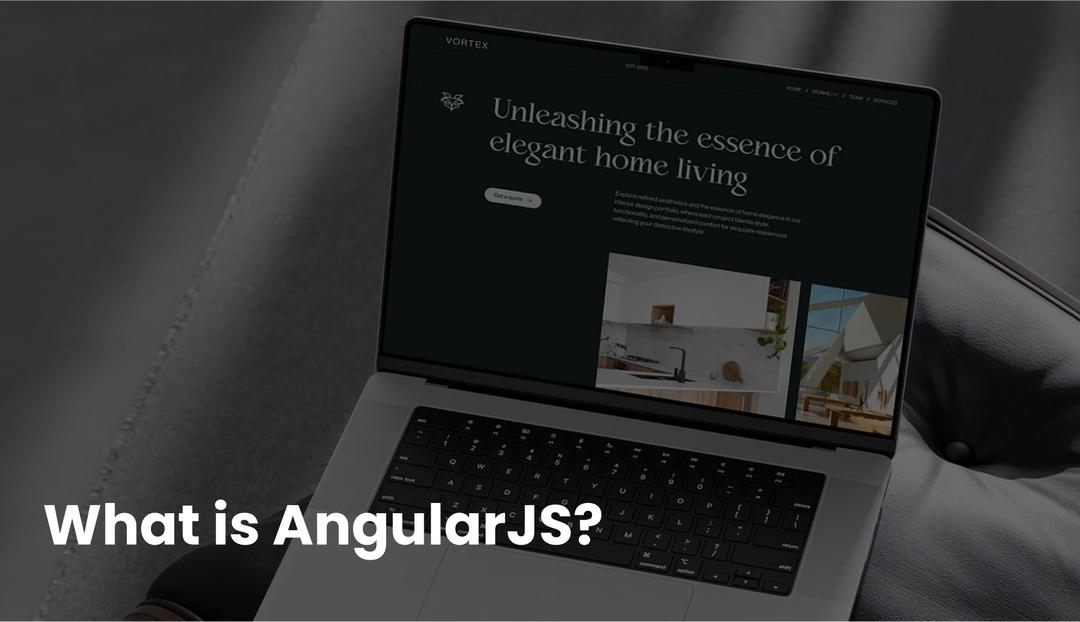Originally developed by Facebook, React Native allows you to work from a single codebase, cutting down development time without compromising on quality. Think of it as writing once and deploying everywhere, which is a big win for developers.
A significant part of what makes React Native so efficient is its extensive ecosystem of UI libraries, developers don’t need to reinvent the wheel for every app’s user interface. Instead, these libraries provide pre-built components that streamline the entire process, letting you focus on the unique aspects of your app.
According to the State of React Native 2023 survey, some of the most widely used UI libraries—like React Native Paper, React Native Elements, and NativeBase—remain favorites among developers, with over 40% planning to stick with them in future projects.
That speaks volumes about how essential a React Native UI library is to modern app development.
As React Native continues to evolve, especially with the introduction of the Fabric architecture in 2025, performance and responsiveness have reached new heights. Combined with the right UI libraries, this framework allows developers to focus on building engaging and functional user interfaces without getting bogged down by backend mechanics.
In this blog, we’ll look at some of the best React Native UI libraries that can help streamline app development processes.
Big plans for your app?
We turn ambitious ideas into digital success stories.
Hire Expert
Best React Native UI Libraries: Your 2025 Toolkit List for Building Wow-Worthy Apps
There are plenty of libraries already in place to help get your app where you want it. Below are some of the most popular UI Libraries. Here’s a quick list of the best React Native UI libraries, each designed to help you create smooth, responsive, and visually appealing interfaces.
- gluestack UI (NativeBase)
- React Native Material UI Kit
- RNUIlib: React Native UI Library
Best React Native UI Libraries [In-Depth Exploration]
Alright, time to get into the good stuff. We will now break down each of the UI libraries we’ve listed, so you can see exactly how they can fit into your app development process and which one suits your needs best.
1. React Native Elements
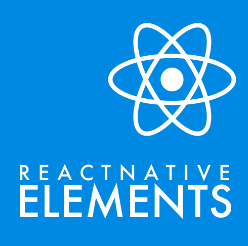
React Native Elements is one of the most reliable UI toolkits available for developers who want to build consistent, high-quality interfaces for mobile and web. It’s known for being easy to use while providing a strong foundation rooted in Material Design principles, which gives your apps a modern, cohesive look right from the start.
What makes it particularly useful is the way it simplifies your work. The library comes with a range of pre-built components—saving you from writing repetitive code, which can speed up various stages of the app development lifecycle, allowing developers to focus on more complex features
Customization is a breeze too. Thanks to the ThemeProvider, you can manage your app’s style globally, while custom props allow you to fine-tune individual components without breaking a sweat. It’s a toolkit built for efficiency, giving developers more time to focus on features that matter.
GitHub Repo for React Native Elements
Documentation of React Native Elements
Key Features
- A lightweight library that reduces app size.
- Excellent community support and frequent updates.
- Compatible with other React Native libraries.
- Easy integration with third-party libraries for enhanced functionality.
- Customizable theming options to match brand guidelines.
2. React Native Paper

If you’re looking for a UI library that sticks to Google’s Material Design principles while offering a wide array of components, React Native Paper is one to consider.
Its main strength lies in its strict adherence to Material Design, making it an ideal choice for developers aiming for a polished, consistent look across platforms. It comes packed with components like buttons, text inputs, modals, and snackbars—all designed to maintain that sleek, Material Design feel.
However, not everyone sees it as the perfect fit for every project. In a popular Reddit discussion about React Native component libraries, one user shared:
“I’ve used it, it’s good and pleasant to use, but in my opinion Paper is starting to feel dated. I also don’t like my iOS apps looking exactly like native Android ones—prefer to either have them look like their own platform or a single unique one.”
This highlights a common consideration for developers who want their apps to have more platform-specific personality, especially for iOS.
Still, React Native Paper shines with its excellent documentation and ability to simplify UI development while closely following Material Design standards.
GitHub Repo for React Native Paper
Documentation of React Native Paper
Key Features
- Supports accessibility features out-of-the-box.
- Optimized for performance with efficient rendering.
- Active development with regular feature additions and improvements.
- Provides cross-platform UI consistency with minimal effort.
- Offers rich documentation, ideal for both new and experienced developers.
3. gluestack UI (NativeBase)

gluestack UI, formerly known as NativeBase, is an accessible, utility-first React Native component library designed to deliver a consistent UI experience across Android, iOS, and web platforms.
Over time, NativeBase faced challenges with accumulated technical debt and performance bottlenecks, prompting a strategic shift toward gluestack UI. This new iteration is focused on building optimal-by-default components that are not only versatile but also customizable to suit various project requirements.
With version 2, gluestack UI has significantly evolved by integrating Tailwind CSS utility classes alongside NativeWind’s powerful styling engine. This combination allows developers to utilize utility-first CSS while benefiting from NativeWind’s high-performance capabilities, making the process more efficient.
The integration ensures clean, organized styles without the complexity typically associated with React Native styling
gluestack UI stands out for being developer-friendly, offering an intuitive approach to building fully responsive UIs that function seamlessly across different platforms.
The use of concise, reusable utility classes speeds up both design and maintenance, while the modular architecture allows developers to select only the components they need, keeping the overall project lean and efficient.
GitHub Repo of gluestack UI
Documentation for gluestack UI
Key Features
- Tailwind CSS integration for efficient utility-based styling with NativeWind’s performance enhancements.
- Cross-platform compatibility for consistent UIs across iOS, Android, and web.
- Modular design, allows developers to pick and use only the components they need.
- Fully customizable components that adapt to any design system.
- Lightweight components that boost performance and speed up load times.
4. Shoutem UI

Ranked fourth on our list, Shoutem UI holds its place for its ability to simplify the app development process while delivering clean, professional designs.
This library doesn’t overwhelm you with endless customization options. Instead, it provides a set of well-crafted, pre-built components that allow you to build polished interfaces quickly and efficiently. This focus on ease of use and design consistency makes Shoutem UI stand out.
Shoutem UI is all about speeding up the development process. A collection of components like grids, cards, and navigation bars eliminates much of the manual work, allowing developers to assemble UIs that look great on iOS and Android without spending too much time on design tweaks
Developers often pair Shoutem UI with the best React Native IDEs to further streamline the development process, ensuring efficiency and a smoother workflow.
Its comprehensive style framework ensures that everything falls into place quickly, making it an excellent choice for those who want functionality without getting caught up in complex design details.
GitHub Repo of Shoutem UI
Documentation for Shoutem UI
Key Features
- Easily integrates with existing React Native projects.
- Offers built-in animations for a smoother user experience.
- Supports rapid prototyping for quicker app design iterations.
- Provides detailed, beginner-friendly documentation.
- Actively maintained with regular updates and improvements.
5. Tamagui
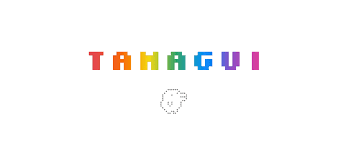
Tamagui has been generating a lot of buzz among developers recently, and it’s clear why. In a recent Reddit discussion about the best React Native UI frameworks of 2025, Tamagui was frequently mentioned by developers who shared both its advantages and challenges.
Its ability to smoothly handle both web and mobile development has made it a popular choice for developers seeking a unified, cross-platform experience. However, it’s worth noting that some have found it less beginner-friendly due to its more advanced feature set.
One developer commented,
“Tamagui is fantastic for web and mobile but also not necessarily easy—I’d be careful if you’re a newer dev. Read through the docs and if you think you can deal with it, go for it.”
This reflects the consensus: if you’re comfortable with its learning curve, Tamagui can offer exceptional results. The focus on performance and stability, especially since the release of version 1.70, has significantly improved its reliability.
Another developer highlighted,
“We are using Tamagui. It’s been getting very stable after the 1.70s releases. Performance is great for the most part.”
This feedback showcases how Tamagui has evolved into a stable, high-performing library trusted by many development teams for both web and mobile applications.
Tamagui’s appeal is further boosted by its ergonomic API, a compiler optimized to generate minimal CSS for the web, and a library of pre-built themes that make designing apps quicker and more efficient.
The active involvement of its creator in the community also adds to its growing reputation.
However, some teams have had to find workarounds for specific components.
Focusing on this area, a Redditor commented,
“We used gorhams bottom sheet to replace the Tamagui sheet. All around, recommend it!””
This shows that while Tamagui offers a lot, there’s flexibility to swap out components if needed.
GitHub Repo of Tamagui
Documentation for Tamagui
Key Features
- Atomic styling system for consistent design across web and mobile.
- Highly optimized for performance, especially with animations and transitions.
- Seamless cross-platform support, reducing development friction.
- Tree-shakable, minimizing bundle size by including only necessary components.
- Strong TypeScript support for safer, more predictable development.
6. React Native Material UI Kit

If you’re aiming for a clean, professional look with a strong focus on user experience, React Native Material UI Kit is the tool you’ll want in your development arsenal. This library strictly adheres to Google’s Material Design guidelines, providing a consistent and familiar interface across different platforms.
Its key strength lies in how effortlessly it implements Material Design components, allowing you to deliver apps that feel polished without getting bogged down in custom design work.
The UI kit offers a wide range of pre-built components—buttons, cards, dialogs, and more—all designed with precision and attention to detail. This makes it a solid choice for developers who want to build feature-rich apps without reinventing the wheel.
It’s particularly effective in projects where consistency in user experience is critical, as it follows Material Design principles to the letter.
GitHub Repo of React Native Material UI Kit
Documentation for React Native Material UI Kit
Need your app done right?
We build, you watch your business grow.
Hire Expert
Key Features
- Includes a comprehensive set of Material Design components for seamless integration.
- Focuses on a cohesive user experience with uniform design across platforms.
- Lightweight and modular, letting developers integrate only the necessary components.
- Consistent updates and community-driven improvements.
- Offers simple and efficient theming options to match app branding.
7. React Native UI Kitten
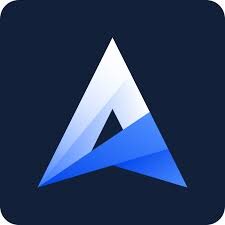
When it comes to building apps with a unique, personalized look, React Native UI Kitten is a standout. Its biggest strength? A theming engine that lets you switch up the entire look of your app with just a few adjustments. Want to go dark mode? Done. Prefer a light theme? Easy. But what makes it truly special is that you don’t have to dig through tons of code to make these changes—it’s all about flexibility without the fuss.
UI Kitten doesn’t just hand you pre-styled components—it provides you with the tools to create something that fits your brand perfectly. It’s ideal for those who need more than just out-of-the-box designs, giving you control to fine-tune every detail. This flexibility makes UI Kitten a favorite for developers who want the freedom to adjust their app’s look across iOS, Android, and web platforms.
The library also has a modular structure, meaning you can either use the components as they are or combine them into more complex layouts. It’s all about giving you the freedom to design the way you want, without making it overly complicated.
GitHub Repo of UI Kitten
Documentation for UI Kitten
Key Features
- Easy theme customization with pre-built options.
- Seamless light and dark mode transitions with minimal setup.
- Modular design for creating custom components.
- Fully responsive elements that adapt to any screen size.
- Consistent updates and strong community support.
8. Lottie for React Native
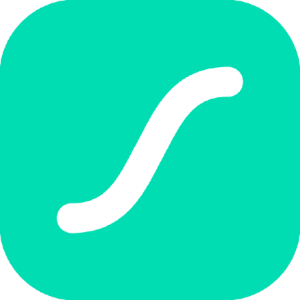
Lottie for React Native offers a powerful way to bring animations into your app, seamlessly integrating animated graphics from After Effects. Originally developed by Airbnb, this library simplifies the process of adding engaging visuals to your app without compromising performance.
Lottie is ideal for developers looking to enhance user experiences with animations like interactive icons, loaders, or onboarding screens. The library’s native rendering ensures that even the most complex animations run smoothly, giving your app a professional, well-designed feel.
Plus, with the vibrant Lottie community, you gain access to a massive library of pre-built animations that can be tailored to fit your app’s needs, cutting down on design time.
This tool ranks among the best React Native libraries for animation, as it delivers engaging visuals while keeping your app lightweight and responsive.
GitHub Repo of Lottie for React Native
Documentation for Lottie for React Native
Key Features
- Integrates After Effects animations directly into React Native apps.
- Native rendering for high-performance animations.
- Access to a large library of ready-made animations from the Lottie community.
- Great for adding dynamic visuals without slowing down the app.
- Supports a wide range of use cases, from icons to full-screen animations.
9. React Native Gifted Chat

React Native Gifted Chat is a well-rounded solution for developers looking to implement chat functionalities in their apps. Its strength lies in providing a set of pre-built components that make creating a messaging interface both quick and effective.
With built-in message bubbles, avatars, and typing indicators, it delivers everything needed for a clean, user-friendly chat experience.
What sets this library apart is how easily it can be customized to fit your app’s design. For developers familiar with any React Native styling library, it’s simple to tweak the look and feel of the chat interface to match the rest of the app. It’s flexible enough to integrate into various backends, ensuring real-time communication runs smoothly.
Developers also appreciate its performance, especially with apps that handle large datasets or require efficient real-time updates. Gifted Chat makes handling messaging features less of a chore, allowing you to focus on refining the user experience.
All in all, Gifted Chat is the best React Native UI library available for implementing chat functionality in React Native apps, providing a strong foundation for scalable and responsive chat interfaces.
GitHub Repo of React Native Gifted Chat
Key Features
- Pre-built components like message bubbles, avatars, and typing indicators.
- Customizable design, adaptable to any app’s style.
- Supports real-time messaging with steady performance.
- Works efficiently with large datasets for smooth communication.
- Easily integrates with different backends for real-time chat features.
10. RNUIlib: React Native UI Library

RNUIlib has made a name for itself among the top UI libraries for React Native, offering a wide array of components that allow developers to build feature-rich interfaces with ease.
One of its most appealing aspects is the library’s collection of over 20 highly customizable components. These include essentials like buttons, cards, and input fields, but also more interactive elements like swipeable lists.
What sets RNUIlib apart is its focus on user interaction through animated components. The built-in animations provide a dynamic and engaging experience for users, adding a level of polish that many other libraries don’t prioritize.
It’s an ideal toolkit for developers who want to create an app that feels responsive and interactive without dealing with the complexities of animation design.
For those looking to build complex layouts or simply streamline their UI, RNUIlib offers a flexible and efficient solution. Its components are easy to customize, and the library’s flexibility ensures it can handle both basic and advanced UI needs.
GitHub Repo of RNUIlib
Documentation for RNUIlib
Key Features
- Over 20 highly customizable components, including buttons, cards, and input fields.
- Built-in Drawer component for smooth and intuitive navigation.
- Swipeable lists for creating dynamic, interactive user interfaces.
- Animated components that enhance user engagement without performance trade-offs.
- Flexible enough to fit both simple and complex UI requirements.
11. Victory Native

Victory Native is the go-to UI library for developers who need to integrate robust data visualizations into their React Native apps.
What makes it truly stand out is its ability to handle a wide variety of chart types—from bar charts to pie charts and everything in between—while maintaining high performance across mobile platforms.
Victory Native focuses heavily on customization, allowing developers to tweak the look and behavior of each chart to match the overall design of their app.
It supports both simple and complex datasets, making it flexible enough for any project that involves data visualization, from finance apps to health monitoring tools.
Another great aspect of Victory Native is its modular design. You can pick and choose which components you need for your specific project, keeping things lightweight and efficient.
The library’s smooth integration with React Native makes it a reliable choice for developers who want their charts to feel like a natural part of the app experience.
GitHub Repo of Victory Native
Documentation for Victory Native
Key Features
- Comprehensive support for a wide range of charts, including bar, line, and pie charts.
- High customization options for tailoring visualizations to fit your app’s design.
- Capable of handling both simple and complex datasets for various use cases.
- Modular structure that allows developers to use only the components they need.
- Reliable performance, ensuring smooth rendering of complex data visualizations on mobile devices.
12. Nachos UI
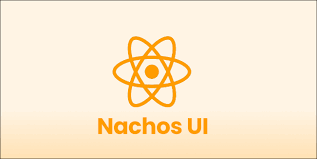
Nachos UI is a library that provides ready-to-use UI components for React Native apps. It is a highly practical and lightweight library that offers developers a collection of pre-styled, ready-to-use components.
The library is known for its ease of use, making it perfect for projects where you need to get the UI up and running quickly without compromising on design quality.
Balancing simplicity and flexibility, the components of Nachos UI are easy to customize, which makes it easy for developers to tweak and match any app’s branding and specific design needs.
From buttons to cards and even more complex UI elements like progress bars, Nachos UI covers the essentials with an easy-to-use API, saving developers both time and effort.
GitHub Repo of Nachos UI
Documentation for Nachos UI
Key Features
- Pre-styled, ready-to-use components that speed up development.
- Simple customization options to adapt components to your design.
- Modular structure, allowing developers to use only the necessary components.
- Lightweight and efficient, making it ideal for performance-conscious apps.
- Covers essential UI elements like buttons, cards, and progress bars.
Hate dealing with tech?
Leave it all to us—focus on your app’s impact.
Hire Expert
13. Galio
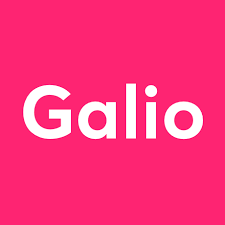
Galio is a modern and highly flexible UI library that gives developers access to a wide range of customizable components, making it a great choice for building beautiful mobile applications.
Its versatility is what sets it apart—it offers a complete set of design elements that can be styled and adapted to fit nearly any type of app. Galio strikes a balance between offering pre-built components and giving developers the freedom to personalize them according to their needs.
This library is particularly useful for developers who want to create sleek, modern interfaces without starting from scratch.
With components like buttons, cards, navigation elements, and typography controls, Galio provides the essential building blocks for any React Native app.
Its design is clean and minimalistic, yet flexible enough to support more complex, creative projects.
Galio’s extensive documentation and active community also make it easier to get started, making it a go-to choice for developers who value both speed and flexibility in their UI development.
GitHub Repo of Galio
Documentation for Galio
Key Features
- Wide variety of pre-built components, including buttons, cards, and navigation elements.
- Clean, modern design that adapts to various app styles.
- Flexible customization options for developers who need to tweak components to fit their projects.
- Well-documented and supported by an active developer community.
- Lightweight library, helping keep performance optimized.
14. Ignite
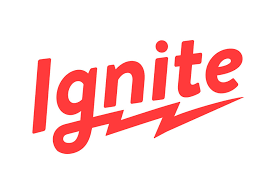
Ignite is more than just a UI library—it’s a complete React Native starter kit designed to help developers get projects off the ground quickly.
Ignite is packed with a rich set of tools, libraries, and best practices that streamline the development process, making it a top choice for developers who want to build mobile apps efficiently without sacrificing quality.
During the early stages of app development, tools like Ignite simplify the transition from mobile app wireframes to functional prototypes. It offers a foundation with pre-built components and navigation, making it easier to turn wireframe designs into fully operational apps.
Moreover, Ignite’s focus on productivity doesn’t just offer UI components but also integrates with various tools that help you manage navigation, state, APIs, and more, all in one place. This means you’re not piecing together different libraries or wasting time on configuration—Ignite sets you up with everything you need, right out of the box.
Ignite also offers flexibility. You can start with its pre-built foundations and tweak them to fit your app’s specific needs.
With its solid set of React Native components and helpful boilerplate code, Ignite makes the development process much smoother for both seasoned developers and those new to React Native.
GitHub Repo of Ignite
Documentation for Ignite
Key Features
- All-in-one starter kit with UI components and development tools.
- Pre-configured navigation, state management, and API integration.
- Customizable boilerplate for quick app setups.
- Focus on productivity, helping developers build apps faster.
- Extensive documentation and community support.
15. Teaset

Teaset is a UI library that stands out for its minimalist approach. It’s designed to help developers create sleek, simple interfaces while focusing on functionality.
Teaset’s strength lies in its lightweight nature, offering a clean set of components that are easy to work with, yet powerful enough to support most app requirements.
One of the unique aspects of Teaset is its focus on simplicity. While many libraries provide an overload of options and customization, Teaset keeps things straightforward. It offers essential components like buttons, menus, and lists but also provides more advanced elements like popovers and navigation bars.
This balance between simplicity and functionality makes Teaset an ideal choice for developers who want a refined design without unnecessary complexity.
Teaset is particularly effective for apps where performance and ease of use are critical. It’s easy to integrate, and its components are designed to be highly responsive across different platforms, providing a smooth user experience.
GitHub Repo of Teaset
Documentation for Teaset
Key Features
- Minimalist design philosophy, focusing on simplicity and usability.
- A lightweight library that keeps app performance high.
- Offers a range of essential components like buttons, menus, and lists.
- Includes advanced elements like popovers and navigation bars.
- Responsive components that work seamlessly across platforms.
Why Use React Native UI Libraries?
React Native is one of the most popular app development frameworks, known for its ability to speed up the development process. UI libraries for React Native provide pre-built components that can further save time and effort while maintaining a high-quality user experience.
Instead of starting from scratch, these libraries offer flexible, ready-to-use elements that streamline development and allow you to focus on the unique features of your app.
Here are five specific reasons why developers turn to React Native UI libraries:
- Faster Development: Pre-built components reduce the time spent designing and coding common elements, allowing developers to focus on more complex, app-specific features.
- Cross-Platform Consistency: Libraries ensure a uniform design across iOS and Android, offering components that automatically adjust to different platforms for a seamless experience.
- Easy Customization: Developers can tweak components to match branding or unique design requirements without needing to reinvent the wheel.
- Optimized Performance: Many libraries come with built-in optimizations for better performance, ensuring smooth animations and interactions, even in complex UIs.
- Active Community and Support: Most React Native UI libraries are backed by an active developer community, providing regular updates, bug fixes, and improvements.
Why stress over app development?
Let us manage the complexities while you lead the vision.
Hire Expert
Drawbacks of Using React Native UI Library
While React Native UI libraries bring many advantages, they come with their own set of challenges. Developers often appreciate the time-saving benefits of these pre-built components, but there are potential downsides as well. Here are a few limitations you might encounter:
- Limited Design Flexibility: Many UI libraries are quite opinionated, meaning they follow specific design guidelines. This can sometimes force developers to compromise on the unique design vision of their app if they want to leverage the pre-built components.
- Customization Challenges: While these libraries offer plenty of components, customizing them beyond the default settings can sometimes be tricky. You may find yourself struggling to make detailed tweaks that align with your app’s branding or unique functionality.
- Maintenance Overhead: As libraries evolve, keeping them up-to-date with your project can become a challenge. Regular updates are necessary to maintain compatibility with new React Native versions, and this can add to your workload.
- Performance Concerns: Not all libraries are optimized for performance. Using too many components from a single library can sometimes bloat your app, resulting in slower load times and reduced performance, particularly for complex applications.
Over-Reliance on External Solutions: Relying heavily on third-party libraries means you’re dependent on external developers to fix bugs or release updates. If a library is no longer actively maintained, this could leave your project vulnerable.
Thinking about app pitfalls?
We design apps that avoid the usual roadblocks.
Hire Expert
Ready to Build a High-Performance App with React Native?
Building an app should never be about wasting time. With the right approach to cross-platform app development, React Native has become the go-to framework for creating fast, high-performance apps.
In fact, React Native can shave up to 30% off development time, all while maintaining the high performance and native-like experiences that users expect. It’s no surprise that over 35% of developers worldwide rely on this framework to deliver results faster and more efficiently.
But simply using React Native isn’t enough—what truly matters is how well you utilize the tools available. That’s where React Native UI libraries come in, providing the pre-built components necessary to streamline development without compromising on quality or user experience.
The developers at BitsWits don’t just create apps—they build experiences. We’ve earned the trust of ambitious entrepreneurs and SMBs by delivering solutions that are as scalable as they are impactful.
How we’ve achieved our position as a leading React Native app development company you ask? Simple. We make your app the benchmark others try to reach.
FAQs



















